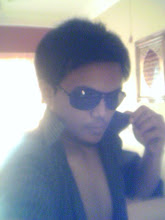Learn Photography: Online SLR Camera Simulator! | |
| Oops! The SLR Camera Simulator requires an updated Flash plugin! User interface design and Flash development by Tuitive. The controls: LightingLighting is the single biggest determinant of how your camera needs to be set. With only a few exceptions, you can never have too much of it. Use this slider to experiment with different indoor and outdoor lighting conditions.DistanceUse this slider to simulate how close or far you are in relation to the subject.Focal lengthMoving this slider is the same as zooming in and out with your lens. A wide, zoomed out setting creates the greatest depth of field (more things are in focus) while zooming in creates a shallower depth-of-field (typically just the subject will be in focus).ModeThe exposure modes of an SLR let you control one setting while the camera automatically adjusts the others. In Tv (Time value) mode, you to set the shutter speed while the camera sets the aperture/f-stop. In Av (Aperture value) mode, you set the aperture/f-stop while the camera sets the shutter speed. M mode is fully manual—you’re on your own! Refer to the camera’s light meter to help get the proper exposure. Although every camera has it, there is no “fully automatic” mode here—what’s the fun in that?ISOISO refers to how sensitive the “film” will be to the incoming light when the picture is snapped. High ISO settings allow for faster shutter speeds in low light but introduce grain into the image. Low ISO settings produce the cleanest image but require lots of light. Generally, you will want to use the lowest ISO setting that your lighting will allow.ApertureAperture, or f-stop, refers to how big the hole will be for the light to pass through when the shutter is open and the picture is snapped. Lower f numbers correspond with larger holes. The important thing to remember is this: the higher the f number, the more things in front of and behind the subject will be in focus, but the more light you will need. The lower the f number, the more things in front of and behind the subject will be out of focus, and the less light you will need.Shutter speedShutter speed is how long the shutter needs to be open, allowing light into the camera, to properly expose the image. Fast shutter speeds allow you to “freeze” the action in a photo, but require lots of light. Slower shutter speeds allow for shooting with less light but can cause motion blur in the image.Happy simulating! © 2009 |
Tuesday, September 21, 2010
erman arts DSLR studio
Subscribe to:
Post Comments (Atom)






No comments:
Post a Comment